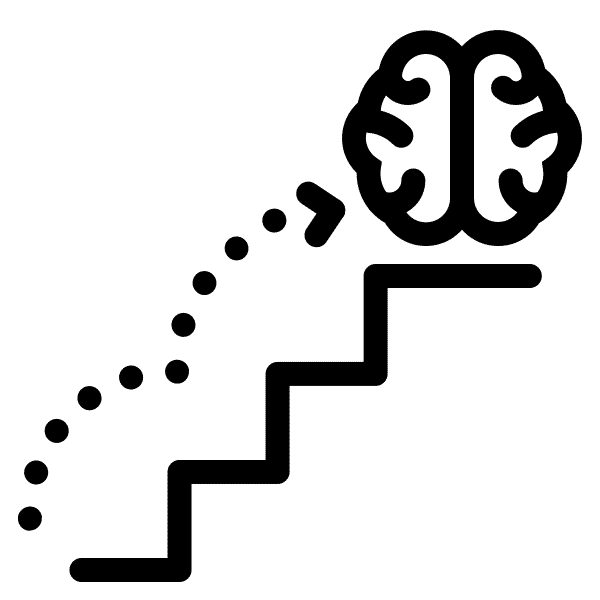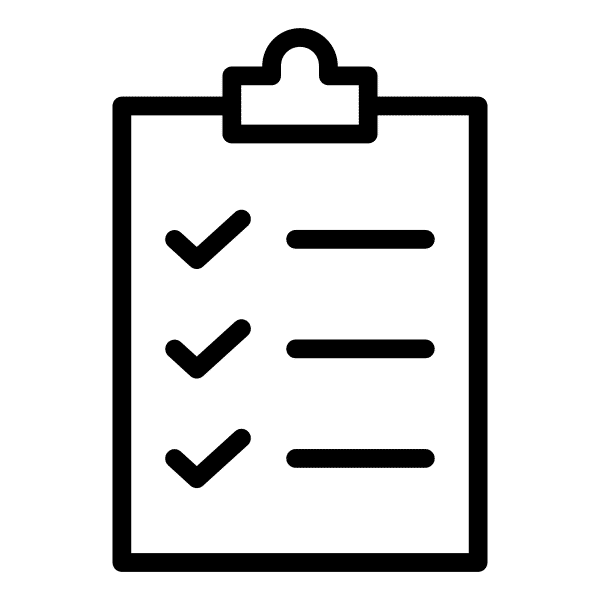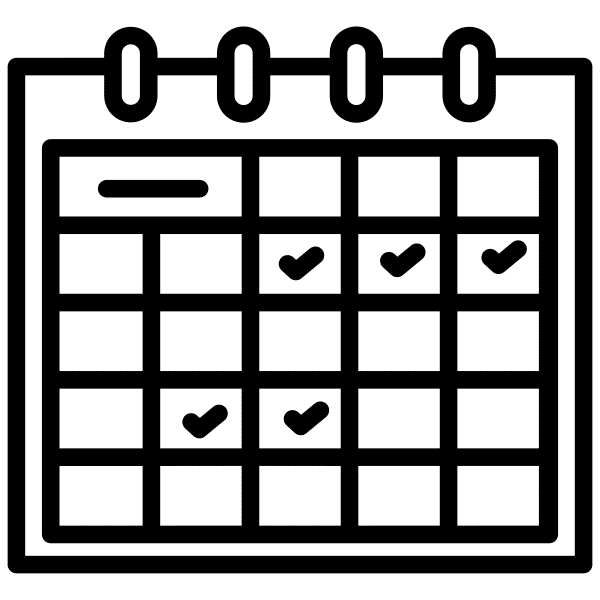Screen Addiction
Table of Contents
With 6.92 billion smartphone users worldwide, the risk of screen addiction and its many negative side effects is at an all-time high. Don’t let you or your kids get caught in the rabbit hole of screen addiction.
What Is Screen Addiction?
Screen addiction, referred to as Screen Brain Syndrome by Dr. Trish Leigh, is when a person uses technology excessively and becomes dependent on it in a multitude of ways. It is identified by a compulsive need to use electronic devices regardless of the negative impacts on daily activities and obligations such as work, school, or social relationships. Studies show screen addiction impairs brain performance, making focus and attention more difficult.
Screen addiction impacts different people in different ways because of the vastness of technological advances that allow us to do so much more using a screen these days. It can lead to a wide array of physical and psychological problems, including focus issues, muscle strain, sleep disturbances, anxiety, depression, and social isolation.
Screen addiction is prevalent today due to the increased level of interactivity and stimulation people get from using technology. Technological devices offer a continuous stream of notifications, updates, and entertainment options that can be difficult for people to ignore. Furthermore, these stimuli can activate the dopamine reward system in the brain, resulting in a cycle of compulsive use and addiction. At the highest levels of stimulation, the screen can become what is known as a supernormal stimulus, giving the brain more dopamine than can be accessed in real-life experiences. This high-level stimulation leads the user back continuously for more while leaving them longing for their life. Brain-based screen addiction can be crucial to improving brain performance and quality of life.
Dr. Trish Leigh has identified compulsions to the screen as Screen Brain Syndrome (SBS) due to the spectrum of screen addiction manifestations that encompass the need to go back to the screen in many different forms, from texting to explicit content. Below is a list of the different types of activities that fall under the umbrella term screen brain syndrome.

Screen Brain Syndrome
Many adults spend their days switching from using their computer to work, search the Internet, and check emails to simultaneously using their phone to text, troll social media, and book their next trip on a specialized app. This constant switching back and forth between multiple media avenues contributes strongly to screen brain syndrome.
- Active Video Viewing with Story Structure
- Specialized apps
- Consuming Passive Content / Reels
- Seeking and Searching for Active Video with no Story Structures
- Seeking and Searching for Passive Content
- Text / instant messaging.
- Social Media / Short-Form Media
- Internet Gaming
- Pornography on a Scale of Increased Intensity

How Can Screen Brain Syndrome be Prevented?
Prevention is key. By utilizing technology, the negative effects of excessive screen time can be avoided. This is easier said than done for most people. To teach people how to balance screen time more effectively, Dr. Trish Leigh has Brain Training 101. The program focuses on helping you understand how to use technology to its advantage, while avoiding being caught up in the pull that it can have on your brain.

How is Screen Brain Diagnosed?
qEEG Brain Mapping refers to Quantitative Electroencephalogram (qEEG) Neurometric Evaluation. This powerful yet non-invasive evaluation provides important information about how your brain is performing. It reads how every area of your brain is working and produces information on your brain’s performance pattern. qEEG is a high-tech, state-of-the-art, way of measuring brain functioning. We can determine how your brain performance affects your mental and physical behaviors. Your brain map shows if your brain is causing ADHD, anxiety, sensory processing issues, concussions, memory loss, and more. You will have no symptoms in all areas of your brain work well. If any area is underperforming or overperforming, symptoms arise.

How Can Screen Brain Syndrome be Reversed?
Excessive screen time has been shown to cause anxiety, depression, a lack of focus and motivation, along with a whole host of other mental and physical symptoms.
Not only that, screens are highly addictive, especially with higher intensity content, such as social media, gaming, and explicit videos.
If you struggle with these cognitive, psychological, or addictive elements, Dr. Trish Leigh can identify the screen brain syndrome pattern that your brain is using and what it needs to reverse the impact that screen time has had on your brain. You can learn more about dysfunctional brain patterns HERE. In a unique and essential assessment meeting, Dr. Trish Leigh can identify the type and magnitude of the dysfunctional brain pattern at the core of your issues and create a clear plan forward.

How Can the Negative Effects of Screen Brain Syndrome be Offset?
Just as the effects of consuming junk food can be offset by a healthy diet and exercise, screen brain syndrome can be offset in a variety of behavioral ways as well.
Screen time should be restricted to one hour during the week and three hours on the weekends, according to the American Academy of Child and Adolescent Psychiatry (AACAP). With the frequent use of screens for socializing, work, and education, this standard is extremely challenging for children, adolescents, and adults to meet. Therefore, balancing the effects becomes crucial. The goal of the Brain Training 101 Club is to assist people in determining the best way to implement this in their own lives.
The four primary strategies include:
TAKING INTENTIONAL OFFSETTING BREAKS FROM SCREENS REGULARLY
GETTING OUTSIDE INTO NATURE THROUGHOUT THE DAY
EASING IN AND OUT OF YOUR DAY, ESPECIALLY AS IT RELATES TO TECHNOLOGY USE
USING AFFORDABLE HOME BRAIN TRAINING EQUIPMENT TO REDUCE SCREEN TIME EFFECTS EACH DAY

Physiological And Mental Effects of Excessive Screen Time
Screen addiction can contribute to physiological and mental effects like insomnia, stress, and depression.
Depression is the most common mental health condition associated with screen addiction. A study from Preventative Medicine Reports found a correlation between higher screen time usage and moderate to severe depression levels, with higher rates found among females. The study found that four or more hours of daily screen time was the tipping point for risk of depression. The cumulative changes to the brain add up to devastating impact in the person’s life. Help for screen addiction is imperative to reverse the damage.
Using screens before bed can lead to many issues that affect a person’s sleep quality. Blue light from devices can delay melatonin production, leading to a lack of sleepiness. Likewise, engaging in stimulating games or watching exciting shows can also make a person feel more alert. Screen addiction heightens the risk for these factors, as a person spends excessive time on these devices and puts off sleep.
Some people claim to use screen time to zone out and take a break from the day’s stressors, but the reality may be that this time is a source of stress. Fear of missing out (FOMO), lowered self-esteem, and loneliness are some of the stressors associated with screen addiction. The Journal of Medical Internet Research found that people who used screen time for entertainment and social networking experienced 19% more emotional stress than those who used screen time for professional purposes.

Treatment For Screen Addiction
Dr. Leigh recognizes the importance of therapy, support groups, and lifestyle changes for successful screen addiction treatment.
Dr. Trish Leigh can perform a qEEG Brain Map (quantitative electroencephalogram) using advanced technology. It is crucial to remember that there is no one-size-fits-all approach to treating screen addiction.
There are many ways in which Dr. Leigh can help you. Have your brain assessed today. Learn more about qEEG Brain Mapping HERE.

